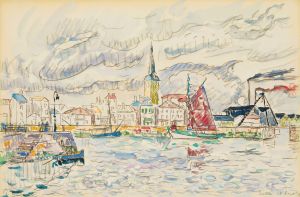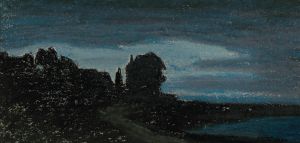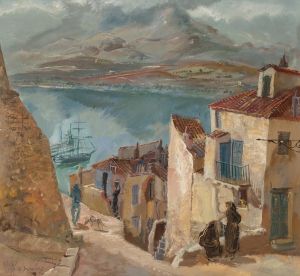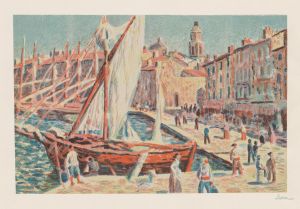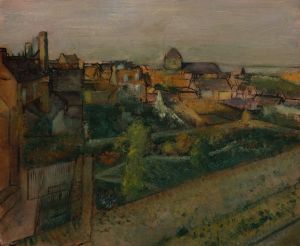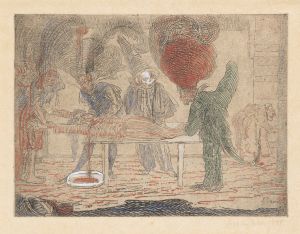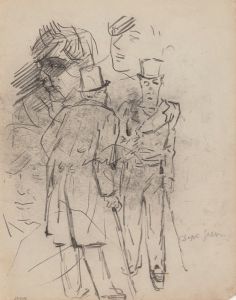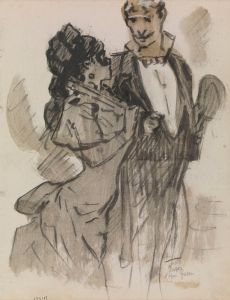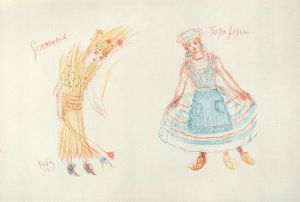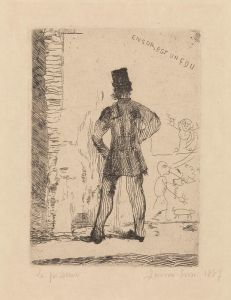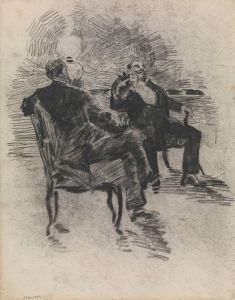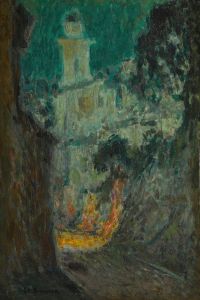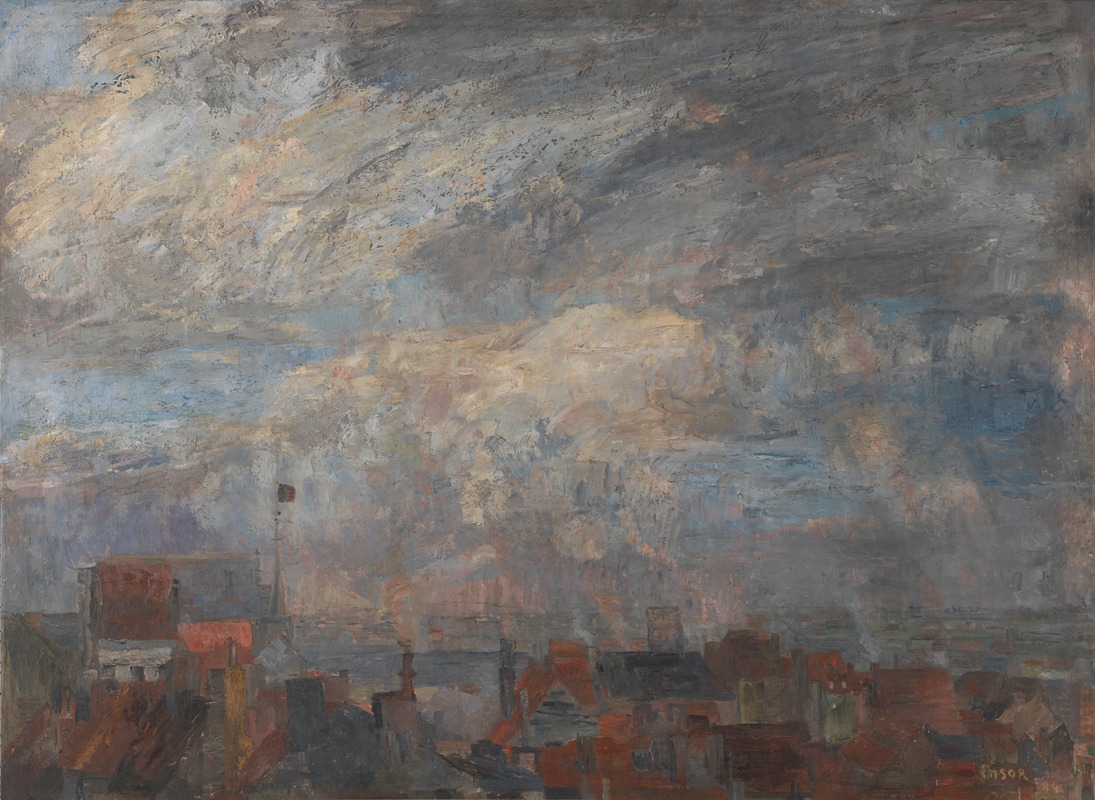
The Rooftops of Ostend
A hand-painted replica of James Ensor’s masterpiece The Rooftops of Ostend, meticulously crafted by professional artists to capture the true essence of the original. Each piece is created with museum-quality canvas and rare mineral pigments, carefully painted by experienced artists with delicate brushstrokes and rich, layered colors to perfectly recreate the texture of the original artwork. Unlike machine-printed reproductions, this hand-painted version brings the painting to life, infused with the artist’s emotions and skill in every stroke. Whether for personal collection or home decoration, it instantly elevates the artistic atmosphere of any space.
James Ensor's "The Rooftops of Ostend" is a notable work by the Belgian artist, who is renowned for his unique style and significant contributions to the Symbolist movement. Ensor, born in 1860 in Ostend, Belgium, spent much of his life in this coastal city, which frequently served as a backdrop and inspiration for his art. His works often reflect a deep connection to his surroundings, and "The Rooftops of Ostend" is no exception.
This painting captures the essence of Ostend, a city that played a crucial role in Ensor's artistic development. Known for its vibrant atmosphere and bustling port, Ostend provided Ensor with a rich tapestry of urban life and coastal scenery. "The Rooftops of Ostend" offers a glimpse into the architectural landscape of the city, showcasing the rooftops that characterize the skyline of this Belgian locale.
Ensor's style is often characterized by bold colors and expressive brushwork, and "The Rooftops of Ostend" exemplifies these traits. The painting is marked by a vivid palette that brings the scene to life, capturing the interplay of light and shadow across the rooftops. Ensor's use of color is not merely decorative; it serves to convey the mood and atmosphere of the city, reflecting his emotional response to the environment.
The composition of "The Rooftops of Ostend" is carefully constructed, with a focus on the geometric shapes of the rooftops and the interplay of lines and angles. This attention to form and structure is a hallmark of Ensor's work, demonstrating his interest in the underlying order of the visual world. Despite the apparent simplicity of the subject matter, the painting reveals a complexity that invites viewers to look beyond the surface and consider the deeper implications of the scene.
Ensor's work often contains elements of satire and social commentary, though "The Rooftops of Ostend" is more subdued in this regard. Instead, it serves as a testament to his ability to find beauty and meaning in the everyday aspects of life. The painting reflects Ensor's fascination with the ordinary, transforming a mundane view of rooftops into a compelling artistic statement.
Throughout his career, Ensor was known for his innovative approach and willingness to challenge artistic conventions. His work laid the groundwork for future movements, influencing artists such as the Expressionists and Surrealists. "The Rooftops of Ostend" is a prime example of his ability to blend traditional techniques with a modern sensibility, creating a work that is both timeless and forward-thinking.
In summary, "The Rooftops of Ostend" by James Ensor is a significant piece that captures the essence of the artist's hometown and showcases his distinctive style. Through his use of color, composition, and attention to detail, Ensor transforms a simple urban landscape into a work of art that resonates with viewers. This painting not only highlights Ensor's technical skill but also his ability to imbue everyday scenes with a sense of wonder and introspection.





